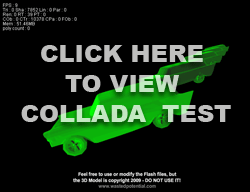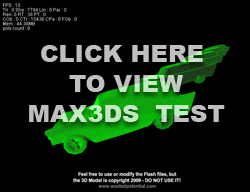I was digging through some of my old files the other day and found this interesting game prototype from a few years ago, when Augmented Reality was the latest buzzword. I had seen some experiments with it, but I was curious to see if the AR Markers could be used as game controllers. Could you create a driving game where the AR Marker acted as the steering wheel? Or, could you even create multiplayer games that used multiple markers?
I started playing with the Transmote FlarManager and decided to try to create an air hockey simulation using 2 AR Markers and the APE physics engine for Flash. My game prototype can be seen in the video below.
This turned out to be a lot more challenging than I expected and I was pretty disappointed in the results. As you can see in the video, the performance of the Augmented Reality tracking is fairly weak. I also had to hack the physics engine quite a bit to get what I was looking for. Here’s the rundown of what I learned:
- The Augmented reality tools are fairly clunky and require a lot of resources. That’s why most of the cool experiments you see use stationary AR Markers sitting on a tabletop. It’s too difficult to keep up with moving markers.
- The Transmote FlarManager library tracks multiple markers, but it is not able to differentiate them. In other words, it can only tell that there are 2 markers on screen in my game. It can not tell which one is player 1 and which one is player 2. In this case, it really doesn’t matter. You score a point in air hockey when the puck lands in a goal – which player touched it last is unimportant. But, in many games, knowing which player acts on an object is crucial. I also tried the Squidder FLAR Actionscript library and had the same results.
- APE (Actionscript Physics Engine) is a set of classes I have used before and I find it useful for simple physics-based games. The syntax makes a lot more sense than Box2D if you don’t know C++. But, for this game, I needed a Dragable Circle Particle, which is not a standard APE class. Luckily, someone smarter than me created one here. I adapted it and then created a FlarCircleParticle for my prototype.
- This prototype has a lot of overhead. It uses the basic AR toolkit for Flash, the FlarManager, Papervision 3D, APE Physics, and more. So, on every frame, I’m capturing the webcam footage, trying to locate multiple AR Markers, using Papervision to calculate the positions of the players, and then running a physics simulation before drawing it to the screen. That’s a lot of work for Flash. For optimization, the Papervision probably needs to be removed and a 2D AR Marker locator needs to be created.
In essence, this experiment is a failure, which is why I never finished it. The FlarToolkit and FlarManager just aren’t capable of what I needed. I don’t consider it a waste of time, though. You need to be willing to take chances with game prototypes… and you need to be willing to give up on prototypes that just aren’t working. Very few great game ideas work perfectly on the first try, but an interesting failure can spawn a lot of great ideas.
If you want to try my prototype for yourself, download the markers and click here to test it out. The source code for this Prototype can be downloaded here. Feel free to take it and play with it. A word of warning: I built this several years ago and I hacked it together pretty quickly, so the code is a bit of a mess. If you are able to create anything cool with it, I’d love to know about it (and a shout out for wasted potential is always nice). Some links to resources you might need can be found below. Good Luck!
- FLARToolKit – the basic Augmented Reality tools
- FLARToolKit Startup Guide – sample files to get you started
- Transmote FlarManager – adds multiple markers to your toolkit.
- AR Marker Generator – you need this to create the pattern files for Flash
- APE – a basic physics engine for Flash. Not the best one out there, but good for hammering out a quick prototype.
- Papervision3D – handles the 3D stuff
*Note that a lot of these actionscript libraries are no longer being maintained. They are the ones that I used when I originally built my prototype.


